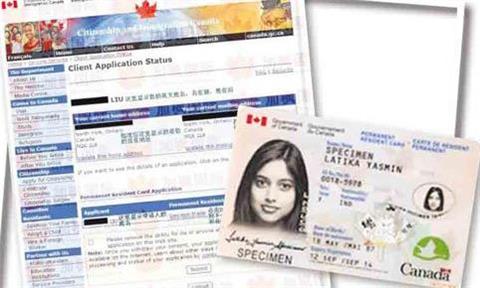How Can I Return To Canada If My Maple Leaf Card Is Lost And Expired? Master The Method And Go Home Smoothly
How Can I Return To Canada If My Maple Leaf Card Is Lost And Expired? Master The Method And Go Home Smoothly
When you are overseas, if you encounter a lost, expired or not received a maple leaf card (PR card), you will feel that your way home will be blocked. In fact, many permanent residents in Canada face this dilemma - some people miss important exams
In a foreign country, once you encounter a maple leaf card (PR card) lost, outdated or unable to get it for a long time, you feel that the way home becomes out of reach. In fact, many permanent Canadian residents have encountered similar problems - some missed key exams, some were burdened with huge debts, and some were unable to return home to bid farewell when their relatives passed away.
How can I return to Canada without a PR card? In fact, this question is not complicated. As long as you master the right method, you can easily return to your home.
During his visit to relatives abroad, permanent residents in Canada unfortunately suffered a stolen wallet, but were accidentally stranded abroad for three weeks: not only did they lose their permanent resident identity card, but the system also malfunctioned.

Canada's "permanent residents" are unable to return because they lost their maple leaf card, stayed overseas for several months, and were burdened with debt.
Why can’t you get a flight without a PR card?
Many permanent residents with foreign passports mistakenly believe that they can easily embark on a journey to Canada with their passports. However, the Immigration, Refugees and Citizenship Canada (IRCC) clearly states that airlines will not have the right to allow such persons to board the plane without a valid permanent residence card or travel document (PRTD).
The core purpose of the policy is to curb the "quiet" return of permanent residents who have not fulfilled their residence responsibilities, while also aiming to provide more sufficient evidence for border security.
However, such provisions do not apply at land borders. Once you step into Canada’s territory, the Canadian Border Services Agency (CBSA) will need to verify your identity in accordance with the law and recognize you as a permanent resident.
Method 1: Return to Canada by land from the United States - the safest way to save the country on the curve
If you are abroad, the most recommended way is to enter the United States and return to Canada.
Step 1: Fly to the US city near Canada
You can choose U.S. cities such as Buffalo in New York, Seattle in Washington, or Detroit in Michigan, which are not far from the Canadian border. There are many flights in these places, and the land port is also close to you, making travel very convenient.
Step 2: Rent a car or take a private vehicle
You must drive your own vehicle across borders and are not allowed to take long-distance passenger transport or shared buses. Because the security checks on public transportation are quite strict.
Renting a car is a good choice for many people, but don’t forget to verify whether the vehicle has purchased insurance, ensure that all registration procedures are complete, and confirm whether the vehicle is qualified to travel across borders.
Step 3: Prepare all the identity materials
In addition to your passport, remember to bring the following information:
Border officials will use this information to determine whether you are a legal permanent resident.
Step 4: Explain truthfully, be calm and confident
After arriving at the national border, be sure to truthfully explain the loss, outdated or unreceived permanent resident card, and actively cooperate in identity verification. As long as the Canadian Border Service confirms your permanent resident status, you will be able to pass smoothly.
Method 2: "Transfer to the country" from Canadian airports - there are risks but feasible
Some people deliberately choose to transfer at Canadian airports to take this opportunity to get off the plane when the plane is transferred.
Once you step into Canada’s territory, the Canadian Border Services Agency will immediately process your entry application.
However, this approach has a higher risk because the airlines at the departure point may still refuse you to board the plane. Therefore, it is not usually recommended for permanent residents to adopt this method.
Method 3: Deal with the issue of overseas PR card expiration-Don’t panic, your identity is still there
Many people mistakenly believe that once the PR card fails, their identity will disappear. However, this view is wrong. In fact, the identity of a permanent resident will not become invalid due to the expiration of the card.
However, it is indeed impossible to board the plane with expired cards, so you need to find another way to return home, such as returning to Canada by land as mentioned earlier, or consider applying for a PRTD.
Method 4: US Citizenship Canadian PR - Return to Canada "pressure-free"
If you are a permanent Canadian resident and hold a U.S. passport, you are lucky. Such a dual identity will ensure that you can return to Canada without any worries about permanent residence cards or PRTDs.
You are carrying a U.S. passport, whether you enter by plane, train or ship, just carry an additional CoPR for emergencies.
Path 5: Apply for Canadian permanent residents’ travel documents - this is the only legal way to be used for air return to Canada.
PRTD is a single valid entry permit issued by the Immigration, Refugees and Citizenship Canada (IRCC) and has been pasted on your passport to facilitate your flight back to Canada.
Eligibility: You must be outside Canada and be a legal permanent resident.
Required materials include:
Application method: You can choose to submit your application to the Visa Application Center (VAC) or Canadian embassies and consulates abroad. In several countries, VAC services may be operated by third-party companies such as VFS. Please pay attention to its processing speed and expenses at this time.
The processing time is not fixed, and can last up to two weeks to six months, and this period is subject to the specific situation of the country, the complexity of the case, and the efficiency of the VFS.
Special circumstances: What should I do if I have not met my 730-day residence obligation?
If you fail to ensure that you live for 730 days every five years, the process of applying for a PRTD will become more difficult, and you will also need to submit detailed instructions on humane and sympathetic reasons.
Please explain in detail the reasons for your long-term departure from the border, such as serious illness in your family, overseas work dispatch or personal health status, and ensure that you attach the corresponding supporting documents. The Canadian Ministry of Immigration, Refugees and Citizenship (IRCC) will make prudent judgments based on actual conditions.
Tips: Extra tips for making rebate smoother
It may be difficult to embark on the journey back, but it has not been completely interrupted. No matter if you are missing a card, have a long wait for a receipt, or have not fulfilled your residence duties, as long as your PR identity is still there, you will be eligible to go home.





